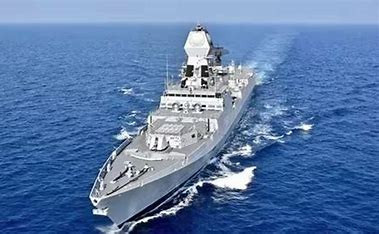views
A Legacy of Maritime Excellence
The Indian Navy traces its roots back to 1612 when the East India Company established a naval force to protect its merchant ships. After India’s independence in 1947, the Navy emerged as a formidable force committed to defending India's coastline, economic zones, and maritime trade.
Today, it ranks among the top 5 navies in the world, known for its operational capability, technological advancements, and blue-water ambitions.
Key Components of the Indian Navy
| Category | Assets/Details |
|---|---|
| Aircraft Carriers | INS Vikramaditya, INS Vikrant (India’s first indigenously built carrier) |
| Destroyers | Kolkata-class, Delhi-class destroyers |
| Frigates | Shivalik-class, Talwar-class multi-role frigates |
| Submarines | Scorpene-class (Kalvari), Arihant-class nuclear subs |
| Naval Aircraft | MiG-29K, P-8I Poseidon, HAL Dhruv helicopters |
| Patrol Vessels | INS Sumitra, INS Saryu for coastal and EEZ surveillance |
| Special Forces | MARCOS (Marine Commandos) for underwater and amphibious missions |
Indigenous Naval Strength: Make in India at Sea
India’s push for Atmanirbhar Bharat (self-reliant India) is strongly reflected in its naval shipbuilding strategy. Major milestones include:
-
INS Vikrant – The first indigenously built aircraft carrier.
-
Project 75 (I) – Aimed at constructing advanced submarines in India.
-
Project 17A – Building state-of-the-art stealth frigates domestically.
-
Indian Naval Design Bureau – Spearheading design for indigenous warships.
Shipyards like Mazagon Dock Shipbuilders Ltd (MDL), Goa Shipyard, and Garden Reach Shipbuilders & Engineers (GRSE) are powering India’s maritime self-reliance.
Strategic Role in the Indo-Pacific
With the increasing focus on the Indo-Pacific region, the Indian Navy acts as a key deterrent and peacekeeping force. Key initiatives include:
-
Mission SAGAR (Security and Growth for All in the Region) – Providing humanitarian aid and defense diplomacy.
-
Quad Cooperation – Regular naval exercises with the U.S., Japan, and Australia.
-
Anti-Piracy Patrols – In the Gulf of Aden and Arabian Sea.
-
Joint Naval Exercises – Like MALABAR, VARUNA, MILAN, and SIMBEX with global navies.
Naval Infrastructure and Future Goals
India is strengthening its naval base infrastructure with:
-
New ports and dry docks (e.g., at Karwar under Project Seabird)
-
Next-gen aircraft carriers (IAC-2 in pipeline)
-
Enhanced drone and UAV surveillance for coastal defense
-
Underwater domain awareness and maritime cyber defense
India aims to have a 175-ship navy by 2035, ensuring dominance from the Arabian Sea to the South China Sea.
Digital Transformation with Hexadecimal Software
Modern navies rely on digital excellence for coordination, security, and combat readiness. Hexadecimal Software contributes to India’s maritime edge through:
-
Fleet Monitoring & Maintenance Systems
-
Mission-Critical Software for Naval Operations
-
Cyber Defense Platforms for Maritime Assets
-
Logistics and Port Automation Solutions
-
AI-Powered Surveillance and Data Analytics Tools
By partnering with defense and government bodies, Hexadecimal ensures India’s naval operations stay sharp, secure, and state-of-the-art.
Dive Deeper on the HexaHome Blog
Stay ahead with curated insights across defense, technology, infrastructure, and real estate. Visit the HexaHome Blog to explore how India’s growth is powered by innovation, whether on land, air, or sea.




Comments
0 comment